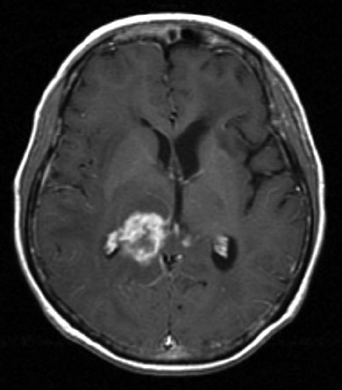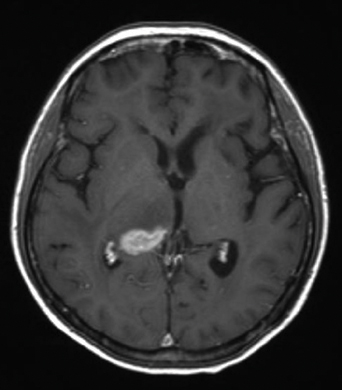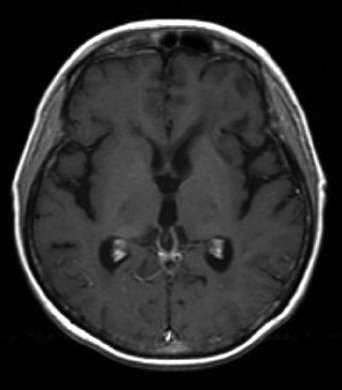Yonsei Med J.
2009 Apr;50(2):280-283.
A Successful Treatment of Relapsed Primary CNS Lymphoma Patient with Intraventricular Rituximab Followed by High-Dose Chemotherapy with Autologous Stem Cell Rescue
- Affiliations
-
- 1Department of Internal Medicine, Yonsei University College of Medicine, Seoul, Korea. hemakim@yuhs.ac
- 2Department of Neurosurgery, Yonsei University College of Medicine, Seoul, Korea.
Abstract
- The prognosis for patients with primary central nervous system (CNS) lymphoma (PCNSL) who relapse after the initial response is usually poor. A standard treatment for relapsed PCNSL has not yet been identified because of the heterogeneity of the therapies employed and the lack of large, prospective clinical trials. We describe a 46-year-old relapsed PCNSL patient who was successfully treated with intraventricular applications of rituximab to minimize neurotoxicity, 2 cycles of salvage chemotherapy with etoposide, ifosfamide, and cytarabine (VIA) regimen and high-dose chemotherapy with autologous stem cell rescue. The high-dose chemotherapy consisted of bischloroethylnitrosourea, etoposide, cytarabine, and melphalan (BEAM) regimen. Partial remission was detected after intraventricular rituximab therapy and the patient has been in complete remission without evidence of neurotoxicity for 28 months after high-dose chemotherapy with autologous stem cell rescue. This case indicates a new appropriate treatment guideline in relapsed PCNSL patient after initial intensive chemo-radiotherapy.
Keyword
MeSH Terms
Figure
Reference
-
1. Batchelor T, Loeffler JS. Primary CNS lymphoma. J Clin Oncol. 2006. 24:1281–1288.
Article2. Ferreri AJ, Reni M, Villa E. Therapeutic management of primary central nervous system lymphoma: lessons from prospective trials. Ann Oncol. 2000. 11:927–937.
Article3. Ferreri AJ, Reni M, Pasini F, Calderoni A, Tirelli U, Pivnik A, et al. A multicenter study of treatment of primary CNS lymphoma. Neurology. 2002. 58:1513–1520.
Article4. Reni M, Ferreri AJ. Therapeutic management of refractory or relapsed primary central nervous system lymphomas. Ann Hematol. 2001. 80:Suppl 3. B113–B117.5. Reni M, Ferreri AJ, Villa E. Second-line treatment for primary central nervous system lymphoma. Br J Cancer. 1999. 79:530–534.
Article6. Oken MM, Creech RH, Tormey DC, Horton J, Davis TE, McFadden ET, et al. Toxicity and response criteria of the Eastern Cooperative Oncology Group. Am J Clin Oncol. 1982. 5:649–655.
Article7. Harjunpää A, Wiklund T, Collan J, Janes R, Rosenberg J, Lee D, et al. Complement activation in circulation and central nervous system after rituximab (anti-CD20) treatment of B-cell lymphoma. Leuk Lymphoma. 2001. 42:731–738.
Article8. Pels H, Schulz H, Manzke O, Hom E, Thall A, Engert A. Intraventricular and intravenous treatment of a patient with refractory primary CNS lymphoma using rituximab. J Neurooncol. 2002. 59:213–216.9. Schulz H, Pels H, Schmidt-Wolf I, Zeelen U, Germing U, Engert A. Intraventricular treatment of relapsed central nervous system lymphoma with the anti-CD20 antibody rituximab. Haematologica. 2004. 89:753–754.10. Watanabe N, Takahashi T, Sugimoto N, Tanaka Y, Kurata M, Matsushita A, et al. Excellent response of chemotherapy-resistant B-cell-type chronic lymphocytic leukemia with meningeal involvement to rituximab. Int J Clin Oncol. 2005. 10:357–361.
Article11. Akyuz C, Aydin GB, Cila A, Akalan N, Soylemezoglu F, Cengiz M, et al. Successful use of intraventricular and intravenous rituximab therapy for refractory primary CNS lymphoma in a child. Leuk Lymphoma. 2007. 48:1253–1255.
Article12. Rubenstein JL, Combs D, Rosenberg J, Levy A, McDermott M, Damon L, et al. Rituximab therapy for CNS lymphomas: targeting the leptomeningeal compartment. Blood. 2003. 101:466–468.
Article13. Rubenstein JL, Fridlyand J, Abrey L, Shen A, Karch J, Wang E, et al. Phase I study of intraventricular administration of rituximab in patients with recurrent CNS and intraocular lymphoma. J Clin Oncol. 2007. 25:1350–1356.
Article14. Arellano-Rodrigo E, López-Guillermo A, Bessell EM, Nomdedeu B, Montserrat E, Graus F. Salvage treatment with etoposide (VP-16), ifosfamide and cytarabine (Ara-C) for patients with recurrent primary central nervous system lymphoma. Eur J Haematol. 2003. 70:219–224.
Article15. Philip T, Guglielmi C, Hagenbeek A, Somers R, Van der Lelie H, Bron D, et al. Autologous bone marrow transplantation as compared with salvage chemotherapy in relapses of chemotherapy-sensitive non-Hodgkin's lymphoma. N Engl J Med. 1995. 333:1540–1545.
Article16. Soussain C, Suzan F, Hoang-Xuan K, Cassoux N, Levy V, Azar N, et al. Results of intensive chemotherapy followed by hematopoietic stem-cell rescue in 22 patients with refractory or recurrent primary CNS lymphoma or intraocular lymphoma. J Clin Oncol. 2001. 19:742–749.
Article
- Full Text Links
- Actions
-
Cited
- CITED
-
- Close
- Share
- Similar articles
-
- A Case of Mantle Cell Lymphoma Treated with Autologous Stem Cell Transplantation and Rituximab
- Recent advances in the management of primary central nervous system lymphoma
- A case of peripheral T-cell lymphoma with central nervous system and bilateral pulmonary involvement
- Three Cases Treated with High-dose Cytarabine and Etoposide followed by Autologous Stem Cell Transplantation for Relapsed Primary CNS Lymphoma
- Treatment of Relapsed Hodgkin Lymphoma




